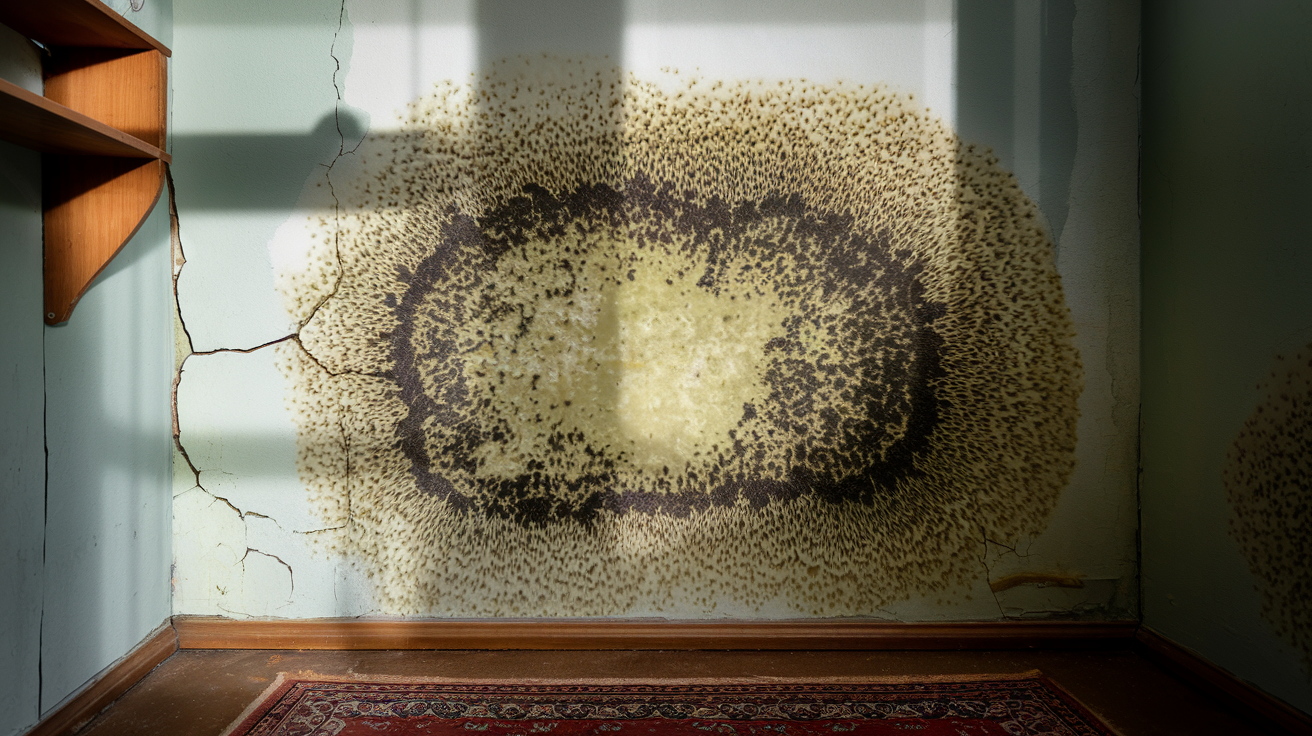Black mold, with its sinister reputation and dark appearance, has become a buzzword in discussions about indoor air quality and health risks. Homeowners often panic at the mere mention of this pervasive fungus, fearing for their wellbeing and the structural integrity of their homes.
However, is black mold truly the villain it’s made out to be? This article will dive deep into the murky waters of mold misconceptions, unearthing the facts hidden beneath the myths. While it can pose health risks under certain conditions, it’s essential to understand the nuances of mold exposure.
Are all strains of black mold equally harmful? Can its presence always lead to dire consequences? Join us as we separate fact from fiction, shedding light on the reality of black mold and its implications for our health and living environments.
What Is Black Mold? Characteristics and Identification

Black mold, scientifically known as Stachybotrys chartarum, is a type of fungus that thrives in damp, humid environments—especially where there is an abundance of cellulose, such as wood, drywall, and paper products. Characterized by its dark greenish-black coloration, it often appears as a slimy or fuzzy mass that can develop in patches on walls or ceilings.
Its musty odor can serve as a telltale sign of its presence, often giving away hidden infestations. While the appearance of black mold can be unsettling, not all mold that looks dark is Stachybotrys.
Identification requires careful observation; black mold might be accompanied by a range of associated health risks, making it essential to address any water damage promptly. However, understanding its characteristics can equip homeowners with the knowledge needed to tackle this potential hazard effectively.
Health Risks Associated with Black Mold Exposure

Exposure to black mold can pose a range of health risks, particularly for individuals with pre-existing respiratory conditions, compromised immune systems, or sensitivities. Symptoms may manifest suddenly and can include persistent coughing, sneezing, and throat irritation, which might seem mild at first but can escalate to more serious complications, such as chronic sinus infections and lung issues.
Moreover, prolonged exposure has been linked to neurological symptoms, including fatigue, memory loss, and mood swings, creating a constellation of health challenges that can significantly impact quality of life. For asthmatics or those prone to allergies, the dangers are even more pronounced; the spores can trigger severe asthma attacks or exacerbate allergic reactions.
Thus, while not everyone exposed to black mold will experience serious health issues, the potential risks underscore the importance of addressing mold growth promptly and effectively to safeguard your well-being.
How to Identify Black Mold in Your Home

Identifying black mold in your home can sometimes feel like searching for a needle in a haystack, but there are telltale signs to guide your investigation. Start by looking in damp, humid areas—basements, bathrooms, and around windows are common hotspots.
You might notice black or dark green spots on walls, ceilings, or even furniture. But mold isn’t always visible; sometimes, it lurks behind walls or inside HVAC systems, creating a hidden menace.
A musty odor is often a red flag, signaling that mold could be thriving nearby. If you experience unexplained health issues—like coughing, sneezing, or skin irritations—while spending time in specific areas of your home, it’s a wise idea to consider the possibility of black mold.
Act swiftly, as early detection can prevent further complications and safeguard your home and health.
Conclusion
In conclusion, while the presence of black mold can evoke fear and concern, understanding the nuances of its potential risks is essential. The reality is that not all black mold is equally harmful, and individual reactions can vary significantly.
Addressing moisture issues promptly and maintaining good indoor air quality are key strategies for prevention. For those who suspect an infestation or experience health symptoms, Black Mold Testing can provide clarity and guide appropriate remediation efforts. By separating fact from fiction, we can empower ourselves to make informed decisions about mold management and protect our health and homes effectively.


